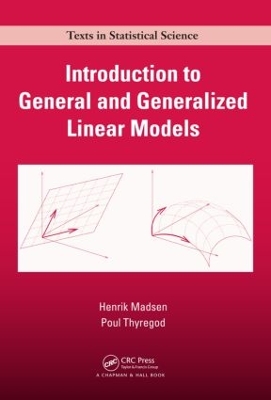Chapman & Hall/CRC Texts in Statistical Science
3 total works
Statistics for Finance
by Henrik Madsen, Erik Lindstrom, and Jan Nygaard Nielsen
Statistics for Finance develops students' professional skills in statistics with applications in finance. Developed from the authors' courses at the Technical University of Denmark and Lund University, the text bridges the gap between classical, rigorous treatments of financial mathematics that rarely connect concepts to data and books on econometrics and time series analysis that do not cover specific problems related to option valuation.
The book discusses applications of financial derivatives pertaining to risk assessment and elimination. The authors cover various statistical and mathematical techniques, including linear and nonlinear time series analysis, stochastic calculus models, stochastic differential equations, Ito's formula, the Black-Scholes model, the generalized method-of-moments, and the Kalman filter. They explain how these tools are used to price financial derivatives, identify interest rate models, value bonds, estimate parameters, and much more.
This textbook will help students understand and manage empirical research in financial engineering. It includes examples of how the statistical tools can be used to improve value-at-risk calculations and other issues. In addition, end-of-chapter exercises develop students' financial reasoning skills.
Introduction to General and Generalized Linear Models
by Poul Thyregod and Henrik Madsen
Bridging the gap between theory and practice for modern statistical model building, Introduction to General and Generalized Linear Models presents likelihood-based techniques for statistical modelling using various types of data. Implementations using R are provided throughout the text, although other software packages are also discussed. Numerous examples show how the problems are solved with R.
After describing the necessary likelihood theory, the book covers both general and generalized linear models using the same likelihood-based methods. It presents the corresponding/parallel results for the general linear models first, since they are easier to understand and often more well known. The authors then explore random effects and mixed effects in a Gaussian context. They also introduce non-Gaussian hierarchical models that are members of the exponential family of distributions. Each chapter contains examples and guidelines for solving the problems via R.
Providing a flexible framework for data analysis and model building, this text focuses on the statistical methods and models that can help predict the expected value of an outcome, dependent, or response variable. It offers a sound introduction to general and generalized linear models using the popular and powerful likelihood techniques. Ancillary materials are available at www.imm.dtu.dk/~hm/GLM

